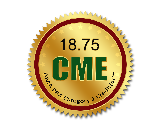
John E Tomaszewski
State University of New York at the University at Buffalo, USA
Title: Data fusion: A new paradigm for 21st century diagnostics
Biography
Biography: John E Tomaszewski
Abstract
Computational advances offer the promise of enabling the quantitative analysis of structural data at all levels of scale. In Pathology high-resolution cellular imaging methods including histology, super resolution optical, and electron microscopic examination can be married with other data using the new analytics of machine vision and machine learning. The computational analysis of structure offers incredible new tools with which to quantitatively mine the data within both macroscopic structure (101) and microscopic (10-6 to -9) worlds and integrate those data with other modes including molecular and cell biology information. In our work we seek to use quantitative histological image analysis for modeling complex biological systems. We do this starting with a fundamental hypothesis which is that a high-resolution image is a self-organizing set of data that uniquely represents all of the genes, all of the molecules, and all of the cells captured at one point in time. In other words, a histological image is what it is for very specific reasons and those reasons are the relationships amongst the genomics, epigenomics, proteomics, metabolomics, and all the “omics” that go into making that image. The promise of quantitative histological image analysis lies in the hypothesis that the linkages relating all of the molecular events contributing to an image are still extant and minable. This keynote address will review some of our work in this new domain of data fusion and integrated diagnostics.

